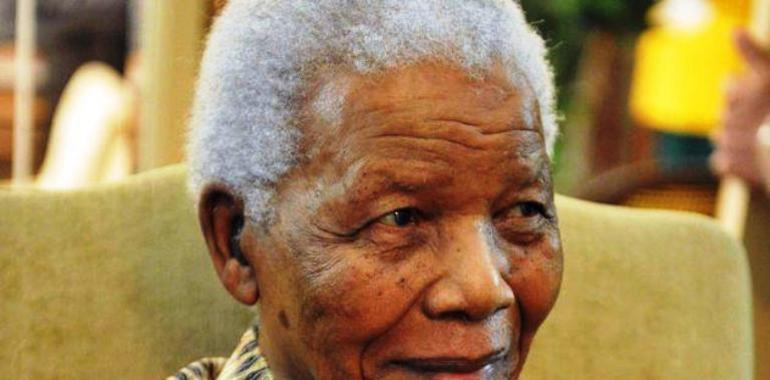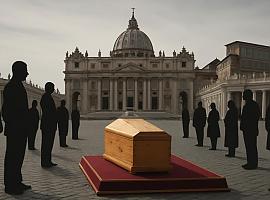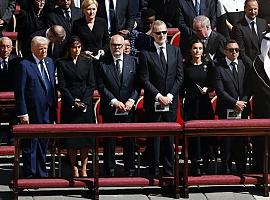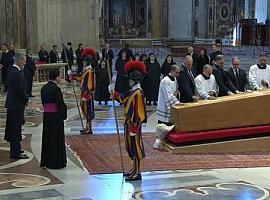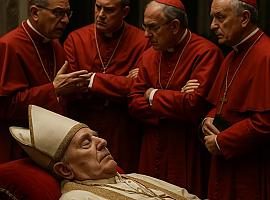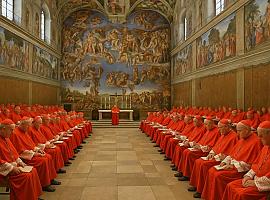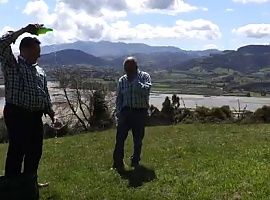A previously unseen portrait and short film of Nelson Mandela was released today as part of a new series: 21 ICONS South Africa.
The portrait and short film shows Nelson Mandela at his home in Qunu, Eastern Cape, in late 2011. The film shows Mandela sitting for the portrait and includes a number of prominent South Africa discussing his impact on their nation and the wider world.
The film reveals a Mandela who handles the hustle and bustle of the crew with his customary aplomb and sense of humour. “Is that okay for you? Should I adjust it?” photographer Adrian Steirn asks him as he positions the mirror into which the statesman must peer for the photo. “You can adjust the size of my face,” quips Mandela with self-deprecating humour.
The resulting portrait shows Mandela’s image reflected in the mirror. “Nelson Mandela has come to symbolise hope for many South Africans. He is a man whose life and principles have captured the imagination of the world. I wanted to shoot a portrait that reflected his legacy — a legacy that we can all carry into the future by sharing his integrity and belief that a bright future lies ahead,” says Steirn. “I asked Madiba to hold the mirror and look into it as if reflecting on his life. And when you look at the portrait, I hope the viewer is prompted to reflect on his legacy and on our future.”
The original, signed portrait, will be sold and the proceeds donated to charity including the Nelson Mandela Children’s Hospital. This initiative honours Mandela’s life-long commitment to the wellbeing of children and, once completed, will become a state-of-the-art specialist pediatric academic and tertiary referral hospital providing child-centered services to the children of Southern Africa, irrespective of their social and economic status. In Mandela’s words, this hospital will be a “credible demonstration of the commitment of African leaders to place the rights of children at the forefront”.
21 ICONS South Africa combines photographic portraits and short films that share the inspiring stories of South Africans who have reached the pinnacle of achievement in their fields of endeavour. The project is the creation of photographer and documentary filmmaker Adrian Steirn, who has been working on the collection for more than two years. The portraits and films will be released weekly from 28 July through to December 2013, with FW de Klerk and Archbishop Emeritus Desmond Tutu being the second and third subjects to follow Nelson Mandela.
It was his admiration for Nelson Mandela that inspired Steirn to create 21 ICONS South Africa. “I set out to meet and photograph Nelson Mandela. And when that happened it changed my life,” he says. Steirn formed a relationship with the Mandela family that led to him being invited to photograph the statesman on both his 93rd and 94th birthdays at his home in Qunu. “To spend time with him and his family was amazing. To be there and absorb it all and to get an understanding of the love, the dynamics that goes on, was incredibly intimate.”
From these meetings flowed the inspiration for celebrating Nelson Mandela and a collection of icons in South Africa who have shaped the nation.
In the first film, Mandela’s humility is substantiated by what Greenpeace Africa director Kumi Naidoo recounts to the 21 ICONS team about his second meeting with Mandela, when he was still president of South Africa. Naidoo and a group of young people and adult learners – people who had just learned to write their names and were still trying to acquire literacy skills – were waiting to meet Mandela and everybody was wondering what they would say to their icon and how they would have to address him. “So they said to me: ‘When he comes, what should we say? Should we say comrade, should we say president, should we say Madiba?’ So I said, say whatever you want – he’s very relaxed, you know, just be yourselves. And this one young girl said to me: ‘I can tell him thanks for making time to see us since he’s such an important person.’ Yes, that’s a good line, I said.”
“So Madiba comes out of the cabinet meeting, says ‘Hi Mr Naidoo’ and then he turns to the people and says: ‘Thank you all for coming. I know how busy you all are. I’m so privileged that you had time to come and see me.’ And in that one moment the gap between the leader and the led was compressed.”
Another icon in the series, FW de Klerk, says about his first meeting with Mandela: “My immediate impression was he was a man of integrity, he was a man of substance, he was a good listener, he was logical in his approach. His greatest attribute is his warmth to people, the true interest he has in them.”
Sophia Williams De Bruyn comments: “South Africa’s got a great tremendous number of great men and women of high values and integrity, like our icon Nelson. They are all unique in their own way and have contributed immensely towards bringing the country where it is today. Mandela came back [from prison] and having gone through all of that hardship and pain, he still had the capacity to forgive so many ugly things, and therefore we should really live in his example and practice that example.”
Also featured in the 21 ICONS series, Archbishop Emeritus Desmond Tutu reminds viewers of Mandela’s great sense of humour. “They had the World Cup for the Homeless and somebody took a picture of me kicking a ball. Nelson Mandela said they must tell me I must act my age.”
21 ICONS South Africa is proudly sponsored by Mercedes-Benz South Africa, Nikon and Deloitte and supported by the Department of Arts and Culture.
SHORT FILM synopsis
We take an exclusive journey with Adrian Steirn to Nelson Mandela’s home in Qunu, Eastern Cape, and experience the warmth and intimacy that permeated the atmosphere during the portrait shoot. FW de Klerk, Desmond Tutu and other prominent South Africans talk about Mandela’s contribution to their nation.
